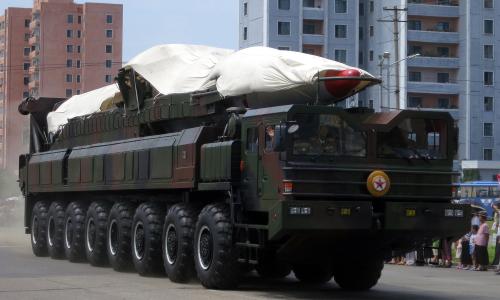The Pentagon's Missile Defense Agency (MDA) is increasingly resistant to providing detailed reports to Congress on the progress of US missile defense programs, and has recently decided to classify more information about its missile defense intercept tests. In such a time of reduced Congressional and independent oversight, it is especially important to understand the extent to which information provided by the MDA is credible and trustworthy.
In this context, we have examined in detail statements made by MDA Director Lt. General Ronald Kadish in recent Congressional testimony, in which he argued that the test record for hit-to-kill missile defenses demonstrates that these missile defense systems will work. Specifically, General Kadish testified that many of the test failures were due to quality control problems that prevented the interceptor from reaching the "endgame" of the intercept attempt, but that when the tests actually reach the endgame, the interceptors have a very high success rate of 88 percent. Moreover, he argued that this high "endgame success" rate shows that the technical feasibility of missile defenses is not in question.
We find that this argument is wrong on several counts: First, the numbers Kadish uses are incorrect; he undercounts the number of endgame failures. Second, he inappropriately combines test data for midcourse and terminal missile defenses, even though they operate quite differently from one another. Third, for both midcourse and terminal systems, the endgame success rate is actually slightly lower than the success rate prior to the endgame. Fourth, there is no reason to consider the endgame success rate rather than the overall success rate—since quality control errors can and have occurred in all phases of the tests. Taking into account failures that occur both prior to and during the endgame, the overall success rate for midcourse systems drops to 41 percent. Finally, and most important, all of the hit-to-kill tests conducted to date have—as the MDA itself notes—included numerous "limitations" and "artificialities," so even a perfect test record would say little about the ability of the system to operate under realistic operational conditions.
Our analysis shows that regardless of how the test results are tabulated, they do not indicate anything meaningful about the technical feasibility of the missile defense systems under development. The MDA analysis that Kadish presented to Congress is based on misrepresenting the results of past tests, and its conclusions are wrong and misleading. This raises serious questions about the recent MDA decision to classify information about its future intercept tests, since this will make it nearly impossible to check its claims. It also indicates how important it is that MDA programs be subject to continuing and increased Congressional and independent oversight.



